We’re all aware that preparing food from scratch (or as close to scratch as possible) is almost always a healthier choice than eating out. When we assemble our meals at home, we control the portion size and the amount of added sugar and salt; plus, our ingredients are likely fresher than those found at your average restaurant. (Not to mention, when we eat at home, we’re probably reducing our food expenses, especially if you follow our savvy grocery shopping tips.)
If you want to take your healthy home cooking to next level, plan how you will prepare your foods, especially your veggies. While vegetables are often the most nutrient-dense items on our plate, many of those vital nutrients are vulnerable to degradation when exposed to heat.
Here are a few essential food preparation tips to follow if you want to make sure you’re getting the most nutrients from your veggies.
Preparing Healthy Vegetables at Home
Eating raw. Eating raw is an excellent way to enjoy produce in its most natural state. It’s also the best way to make sure you’re getting the full vitamin C content of your food (heating food reduces vitamin C content). An all-raw diet probably isn’t the solution for many people, however. Not only can abundant raw foods be difficult on your digestive system, there is also some benefit to cooking certain foods. For example, gentle cooking methods increase the availability of lycopene and carotenoids.
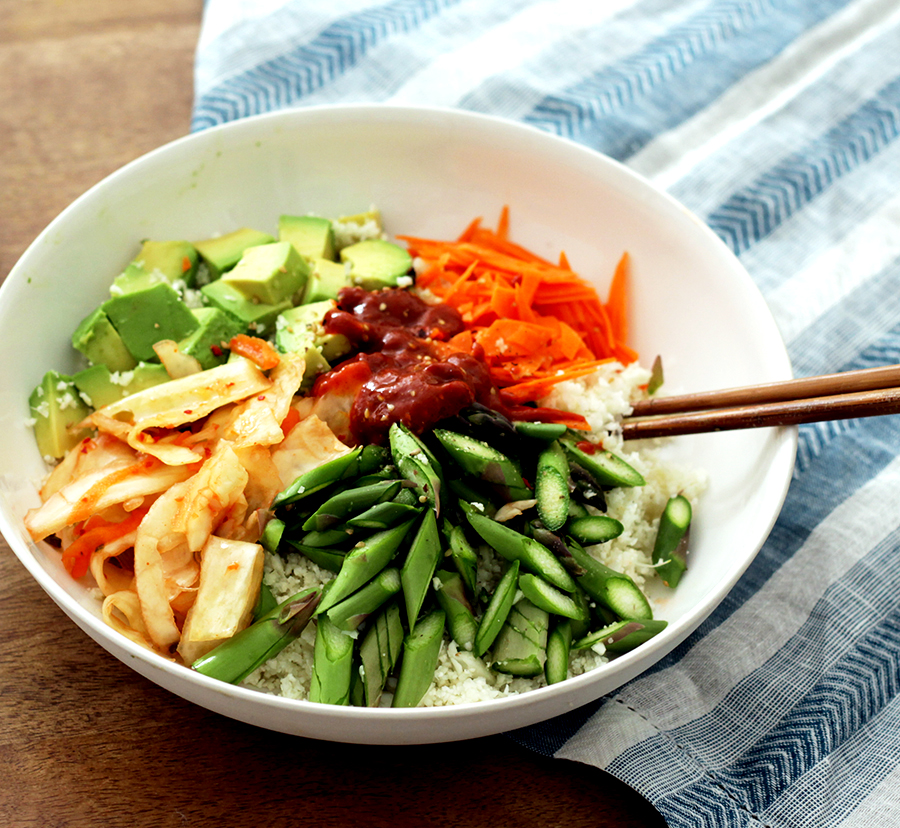
Sautéing. Although sautéing decreases the available vitamin C in foods, it may actually increase the availability of other antioxidants as well as fat-soluble vitamins (as sautéing usually involves adding a small amount of oil (fat) to a pan).
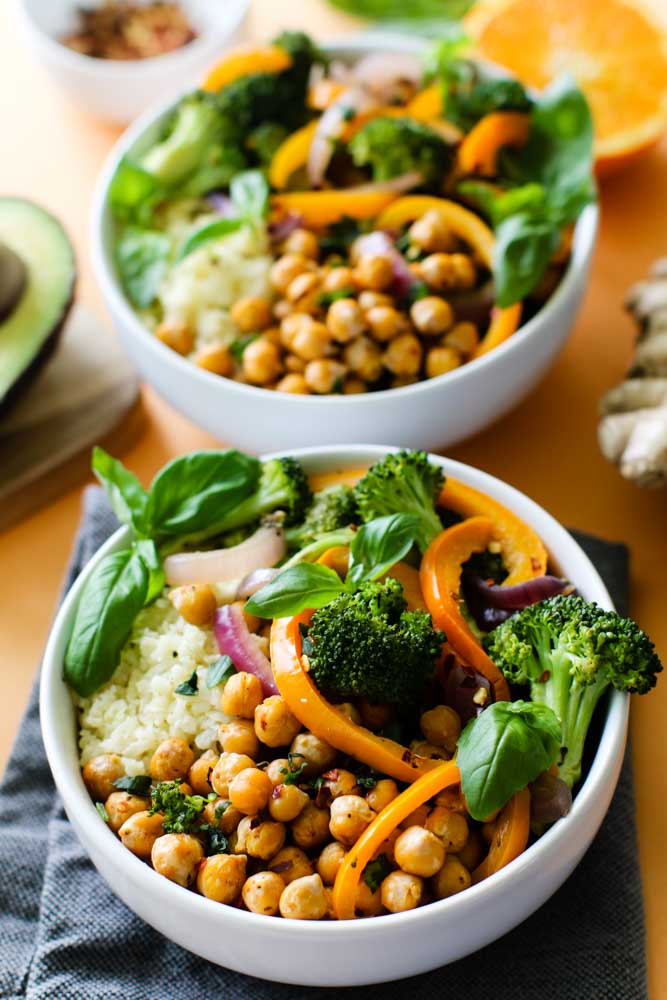
Vegan Orange “Chicken” Stir-Fry With Chickpeas & Fresh Veggies
Steaming. Sure, steamed foods may not be the most enticing, but their nutritional quality is superb. Steaming allows veggies to maintain carotenoids, glucosinolates, sulphorane, folate, phytochemicals, and water-soluble vitamin B.
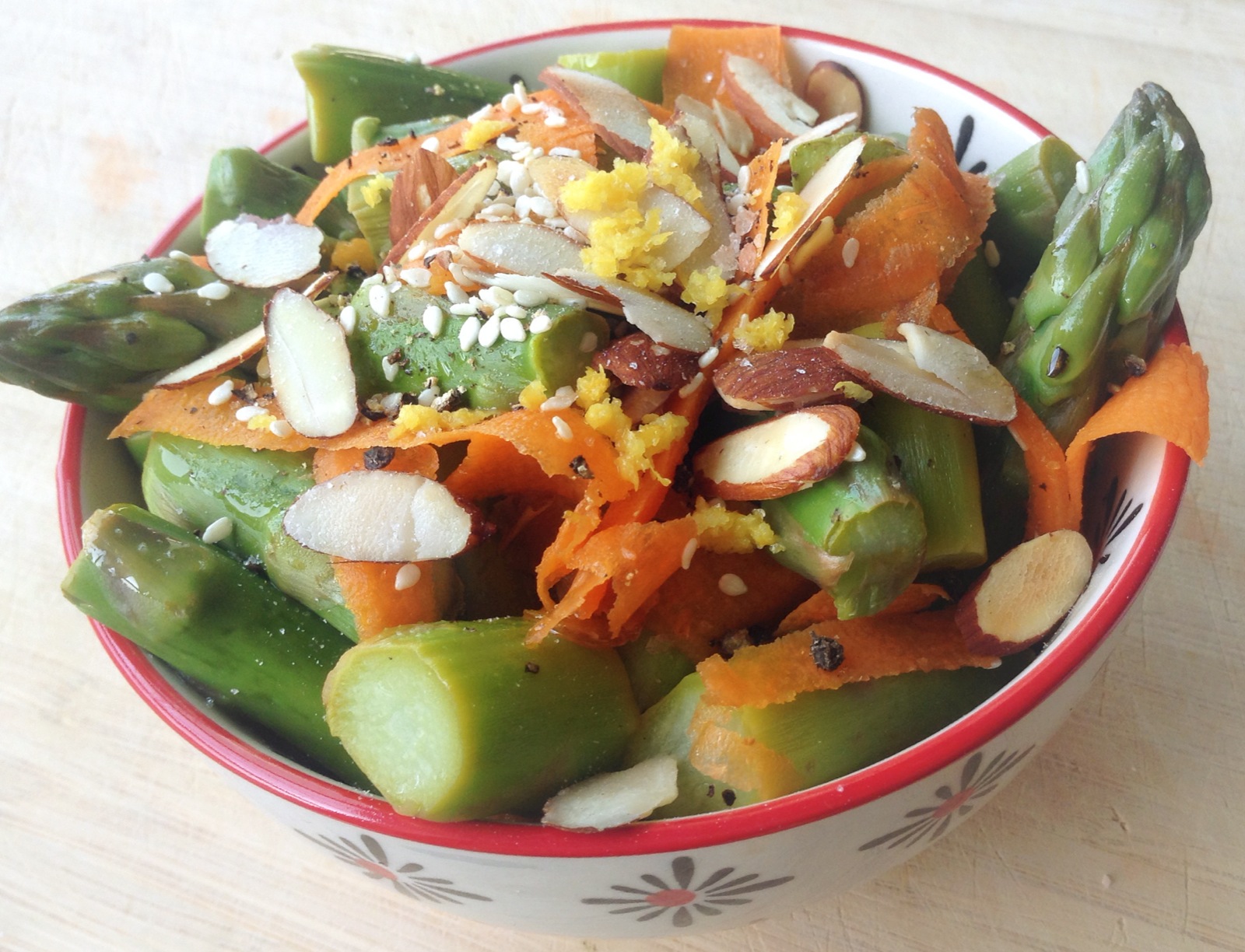
Spice and Everything Nice
If gentler methods of cooking leave something to be desired flavorwise, don’t hesitate to experiment with spices (spice blends are great for beginner cooks!). Try adding some acid to your food, too. Yummy acids include apple cider vinegar, white or red wine vinegar, balsamic vinegar, and citrus juices–a squirt of fresh lemon can make a huge difference! When you have the time, creating custom sauces and marinades can also help elevate the flavor of basic veggies.
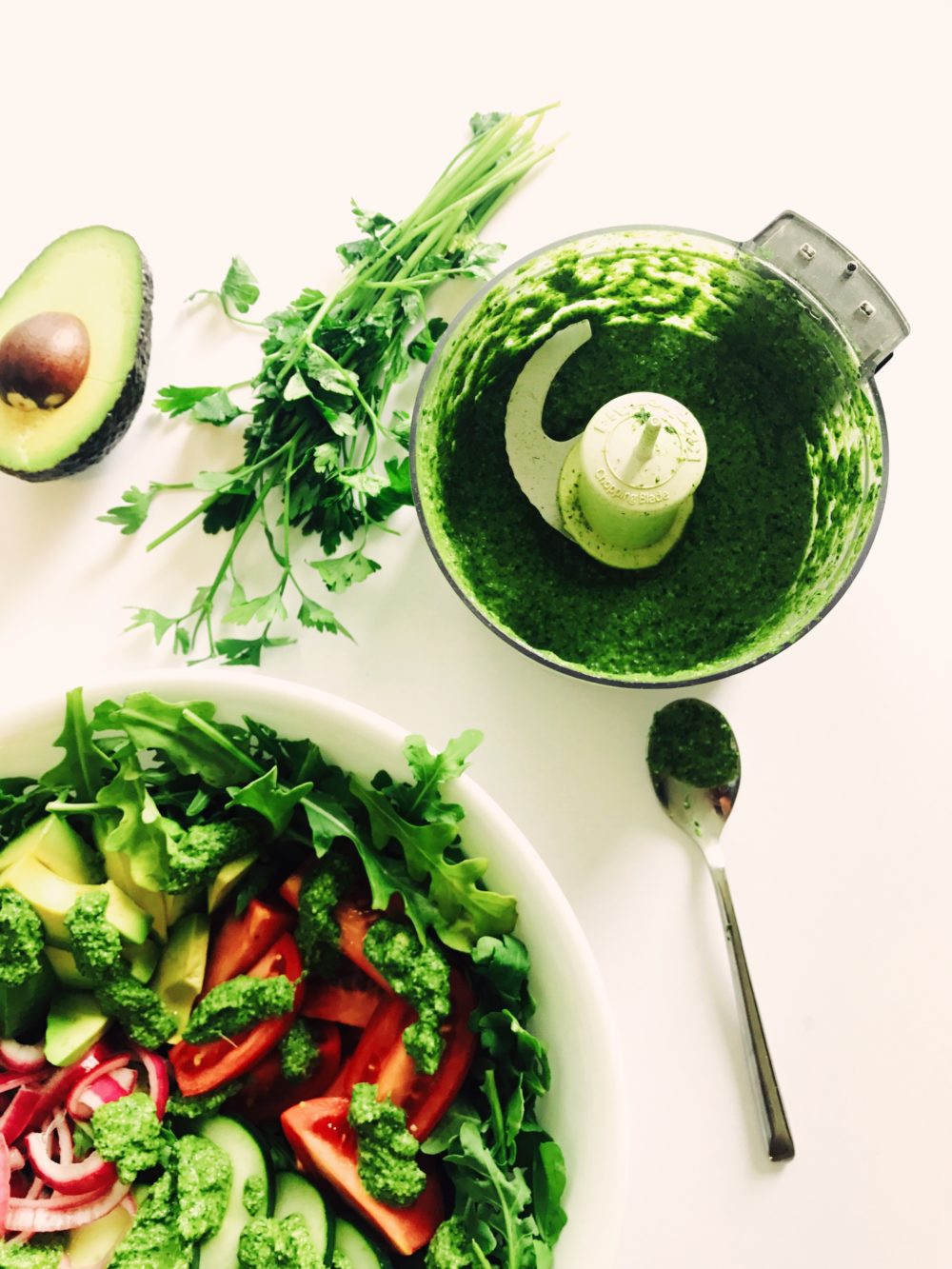
What about starchy vegetables?
Vegetables like winter squash and sweet potato have a starchy quality and tend not to digest as nicely when they’re not properly cooked. Steam, bake, or sauté these veggies until they are fork-tender, and your tummy will thank you.
In general, avoid overcooking vegetables. Boiling and grilling (to the point of charring the food) tend to reduce the nutrient value of foods. However, these methods may be most suitable if you’re working on acquiring a taste for new veggies–as little beats a good sear on some asparagus or zucchini. Ultimately, it’s about finding balance with your cooking methods. In my own cooking, I tend to stick to the lighter methods of cooking, like steaming or lightly sautéing, for the bulk of my veggies, but I also enjoy roasted things, too. Sometimes I will even combine the methods in one meal.
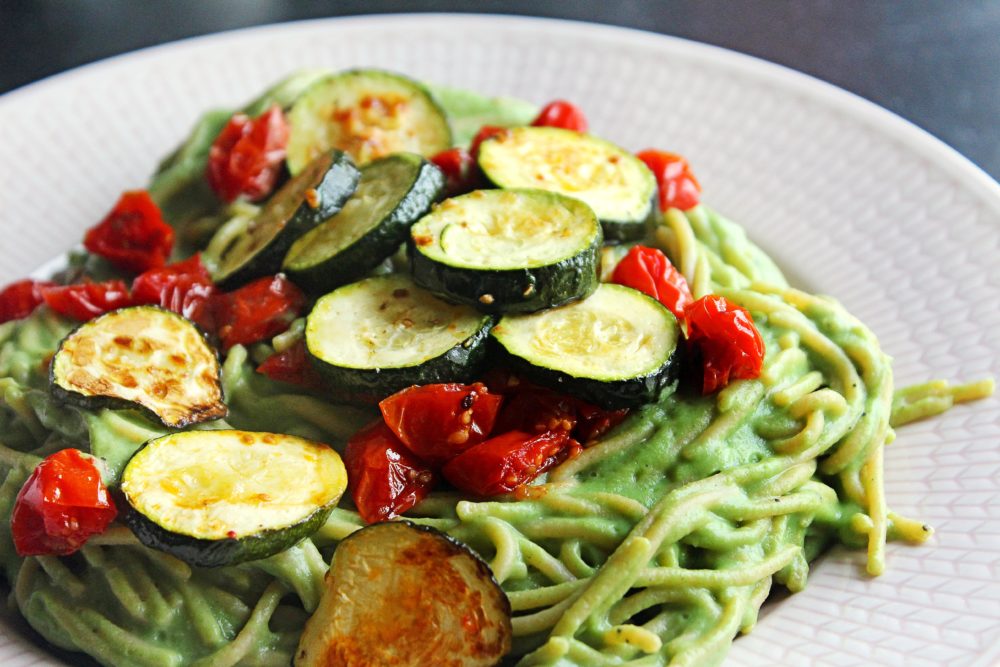
Roasted Garlic Supergreens Cauliflower Alfredo With Zucchini & Tomatoes
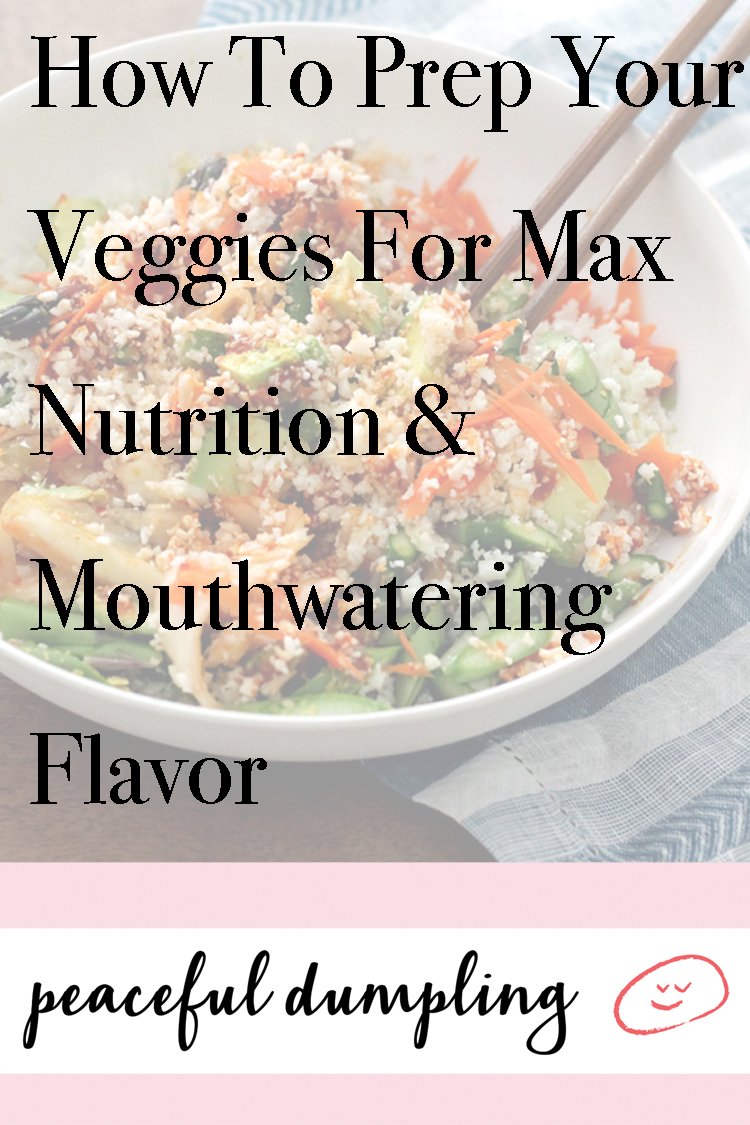
What’s your favorite way to cook vegetables?
More cooking tips: Best Vegan Cooking Tips From Pro Chefs
How to Properly Salt Your Food
6 Vegan Hacks That Will Effortlessly Up Your Cooking Game
Get more like this–sign up for our newsletter for exclusive inspirational content!
__
Photo: Peaceful Dumpling, Lauren Kirchmaier, Olivia Parr, Mary Hood Luttrell
